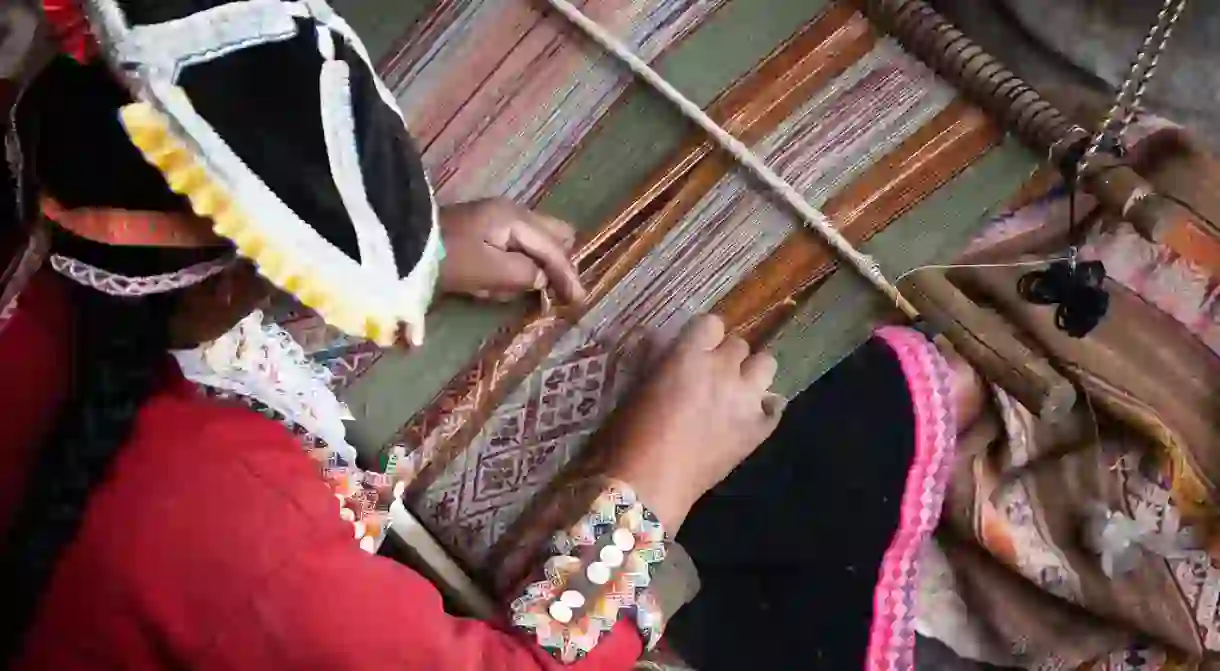Spinning a Yarn on Andean Culture: Meet Peru’s Indigenous Weavers

You’ll definitely see them when traveling through Peru. At every gift store there will be vibrant and beautifully-made textiles, which, in a way, have become a symbol of Peruvian tourism, the prize every tourist brings home to show their friends. While the tourists have their story, these handwoven textiles mean something entirely different to the women who make them. Find out about these remarkable people and their stunning pieces of art and what they mean.
It’s cold, and at 13,000 feet in the Andes there aren’t many places to hide from the weather. After shearing the alpaca and preparing her various colors of thread, she begins on making her textile. It’s an everyday thing, between the cooking and herding, to create these vibrant pieces of art.

Its importance
Like how a novelist tells a story and a painter paints a picture to express a moment in time, Andean weavers, too, participate in the same sort of storytelling, but through their weaving. Quechua, the language of the Incas, which is still spoken in the highlands of Peru, was not a written language. Instead, their stories were reflected and transmitted into the weaving of fabrics, in the intricate details and vibrant colors of their textiles. They were and still are, in a way, weaving their history. Every detail of a textile conveys meaning, from the woven symbols themselves, to the colors and spin of the yarn, to the placement of Quechua symbols in relation to other icons woven into the textile. The symbol of the past, of their own cultural identity, is perhaps its most important aspect. It is a tradition passed on through time immemorial, to little girls at the ages of seven or eight. While weaving their past they are also weaving their future.

The communities
This is a tradition that dates back before the Incas, and the communities that practice this are visages from a time almost forgotten. But with the influx of tourism in Cusco and the Andean region, and those tourists’ rapacious desire for these textiles, the production of these beautiful pieces of art is continuing to thrive—although, perhaps for different reasons. High in the Andes and throughout the Sacred Valley, communities and little villages continue to carry on the tradition of weaving.
How it’s done
Weaving is a very complicated process that begins with the flock, with the women shearing their alpaca and sheep and then washing the fibers with dyes, depending on the desired colors. The fibers are then spun into thread from an oblong clump of material using a drop-spindle. From there they have their different colors for making their beautiful textiles. Once the thread is ready, they use two pieces of wood to keep each end of the textile secure while they weave. Between these two wooden posts, like between the covers of a book, the threads read of a story and history throusands of years in the making, a story that is still being told today.














